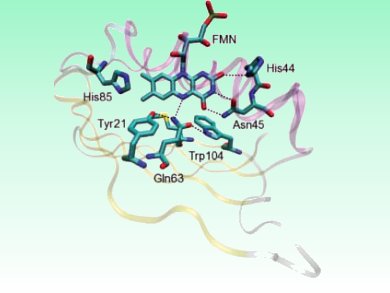During the past years, the computationally affordable combined quantum-mechanical molecular-mechanical (QM/MM) methods have established themselves as important tools for the study of complex biomolecular processes, such as enzymatic reactions and photocycles. The two Hamiltonians corresponding to QM and MM treatments have to be solved over appropriate regions that must be selected judiciously and their respective boundary conditions matched.
Wilfred van Gusteren and his co-workers, ETH Zürich, Switzerland, have examined the effect of the size of the QM region (among other factors) on the simulations of the photoactive properties of the protein AppA. AppA is a transcription factor that controls both redox and blue light repression of photosystem gene expression in the photosynthetic bacteria Rhodobacter sphaeroides.
The authors find that the boundary conditions and the molecular Hamiltonian used have a significant effect on the solution. Variation of the size of the QM region affected whether the hydrogen bonding at the active site is described quantum mechanically, classically, or quasi-classically. Further, the authors found that this in turn impacts the length of time needed for consistent results for ensemble averages of molecular properties.
- On the effect of a variation of the force field, spatial boundary condition and size of the QM region in QM/MM MD simulations,
K. Meier, W. Thiel, W. F. van Gunsteren,
J. Comput. Chem. 2012, 33(4), 363–378.
DOI: 10.1002/jcc.21962





This is a key via for agriculture.